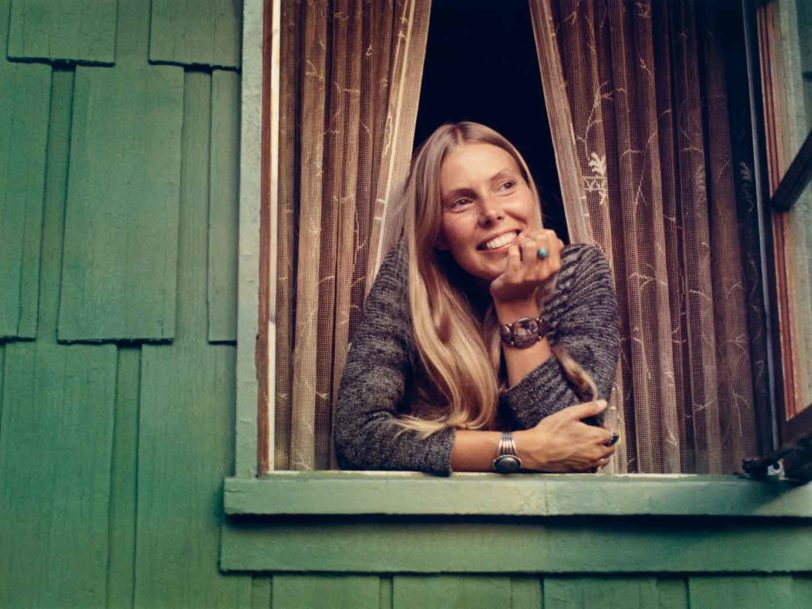With her fourth album, Blue, Joni Mitchell looked inwards for inspiration, and stripped her sound back to produce an album that laid the blueprint for generations of singer-songwriters to come. An artist unafraid to mine her own personal life for songs as intimate as diary entries, Mitchell also had a rare talent for making her work universal. The songs on Blue were tough, romantic, cynical, witty, self-aware and brutally honest, and their emotional intensity connected with a huge audience that made the album Mitchell’s first to sell more than a million copies.
Listen to ‘Blue’ here.
While Blue would become synonymous with Los Angeles’ Laurel Canyon scene – an early-70s hotbed of sensitive singer-songwriters – it came about as a result of Mitchell breaking away from the US all together. While her relationship with Graham Nash had seemed like the epitome of the hippie ideal (see Nash’s Our House, from Crosby, Stills, Nash And Young’s Déjà Vu album), it had fallen apart in late 1969, and Mitchell fled to Europe. There she lived what she saw as a more authentically bohemian life, feeling a genuine freedom that eluded her back home.
“I felt so naked in my work”
Spending an extended period in Crete, Mitchell met Carey Raditz, a North Carolinian copywriter who had embraced laidback life on the island. Mitchell wrote a song named after him, and played it for him on his birthday – a present and parting gift. It sounds breezy and lovestruck, but the lyrics see Mitchell conflicted, aware that she’s not entirely cut out for this new way of living: “My fingernails are filthy, I got beach tar on my feet/And I miss my clean white linen and my fancy French cologne.” Her wanderlust took her next to Paris, then onto Spain and Ibiza, where she wrote the dizzyingly homesick and gorgeous California.
Rather return to the West Coast, Mitchell first travelled to Canada, where she played Toronto’s Mariposa Folk Festival in July 1970. There she met singer-songwriter James Taylor, also on the bill. The two soon became inseparable, with Mitchell joining Taylor on the set of Two-Lane Blacktop, the cult road movie in which Taylor took the lead, before the pair travelled to Chapel Hill, North Carolina, to spend Christmas with the Taylor family. The festive break, in a place where, unlike her native Canada, “It don’t snow here, it stays pretty green,” is said to have inspired the heart-stopping piano ballad, River, one of Blue’s most beloved songs.




